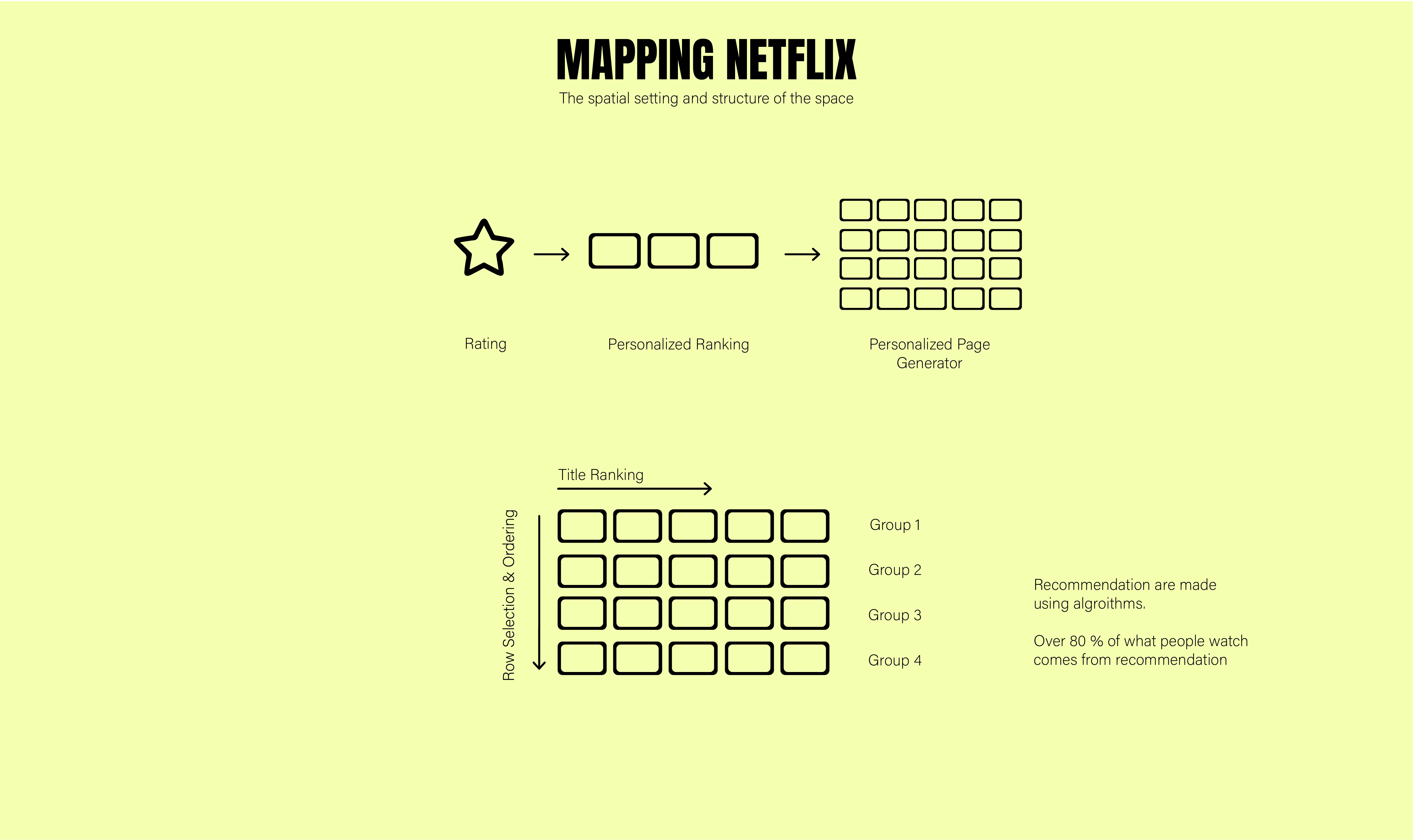NETFLIX X RANKING
The recommendation system works putting together data collected from different places. Recommended rows are tailored to your viewing habits. That’s why you can tell when your little cousins have been using your account to watch a billion hours of Peppa Pig. In this case, algorithms are often used to facilitate machine learning. Systems like Netflix based on machine learning rewrite themselves as they learn from their own users. Every time you press play and spend some time watching a TV show or a movie, Netflix is collecting data that informs the algorithm and refreshes it. The more you watch the more up to date the algorithm is.
The collected data is multi-faceted and complex, but it involves way more than just processing the genre of a program a user is watching and recommend him or her dramas, romances or comedies. Todd Yellin, Netflix’s VP of product innovation, told Wired in 2017: “what we see from those profiles is the following kinds of data — what people watch, what they watch after, what they watch before, what they watched a year ago, what they’ve watched recently and what time of day”. The Netflix experience is driven by a number of machine learning algorithms: ranking, search, similarity, ratings and more. They can’t offer their entire catalogue at once so they must curate it. As quality and taste are rarely the same thing, Netflix cannot work as Rotten Tomatoes, Pitchfork or IMDb, they have to know their users and get recommendations tailored to each individual.
Evolution of our personalization approach.
Evolution of our personalization approach.
Netflix works with taste groups. Each viewer fits into multiple groups and these affect what recommendations pop up to the top of every onscreen interface, which genre rows are displayed and how each row is organized. If your viewing patterns are similar to another user Netflix will serve up recommendations based on the behavior of that other users as well.
The tags that are used for the machine learning algorithms are the same across the globe. Netflix has hired real life humans to categorize every bit of TV shows and movies and apply tags to each of them in order to create hyperspecific micro genres such as “Visually-striking nostalgic dramas” or “Understated romantic road trip movies”.
Each of these data factors comes together to identify which taste group you fit into. Each user’s screen gets populated — left, right, and top to bottom — is based on which groups they belong to.
